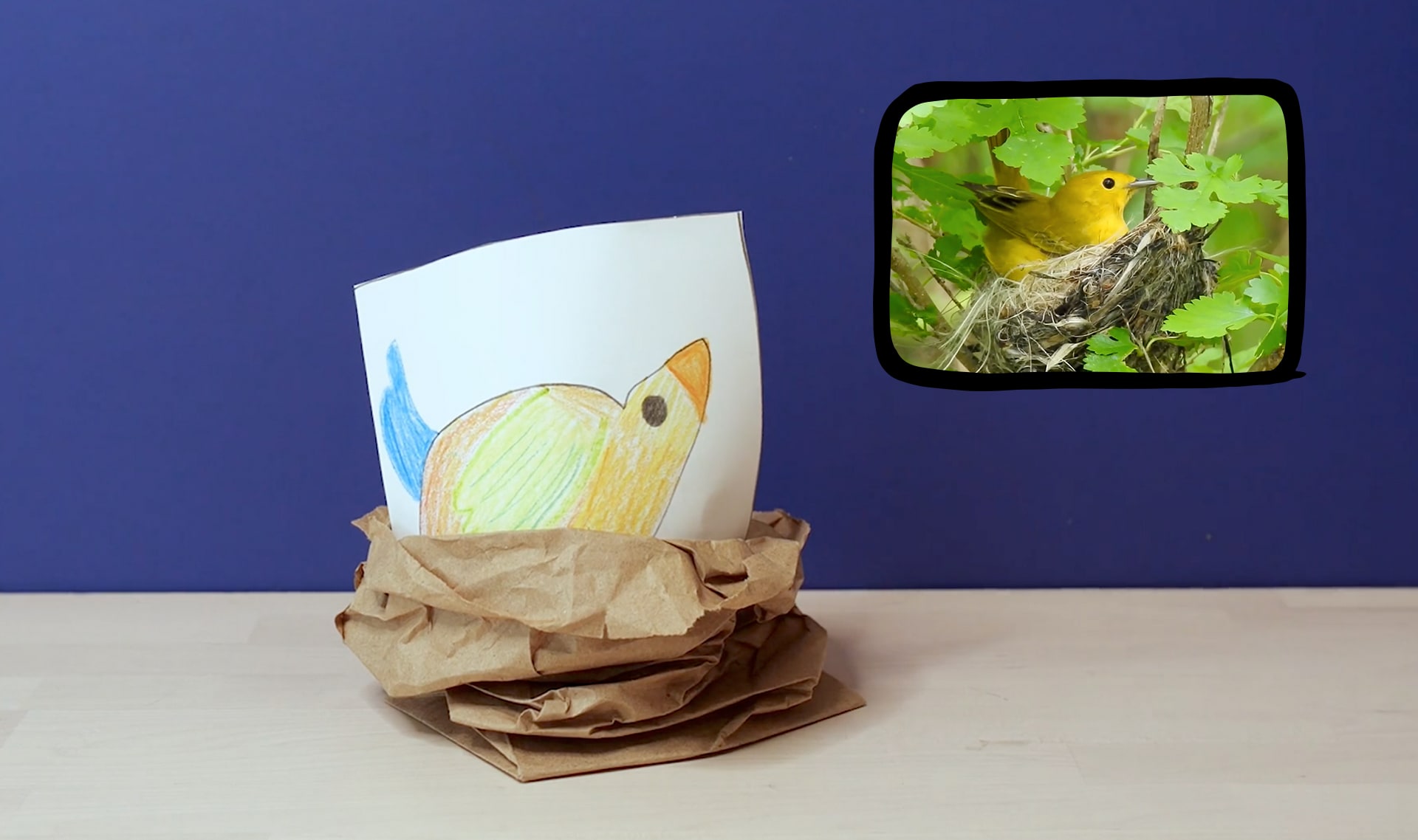
DISCUSS:
Why do you think most birds lay their eggs in spring, and not other seasons?

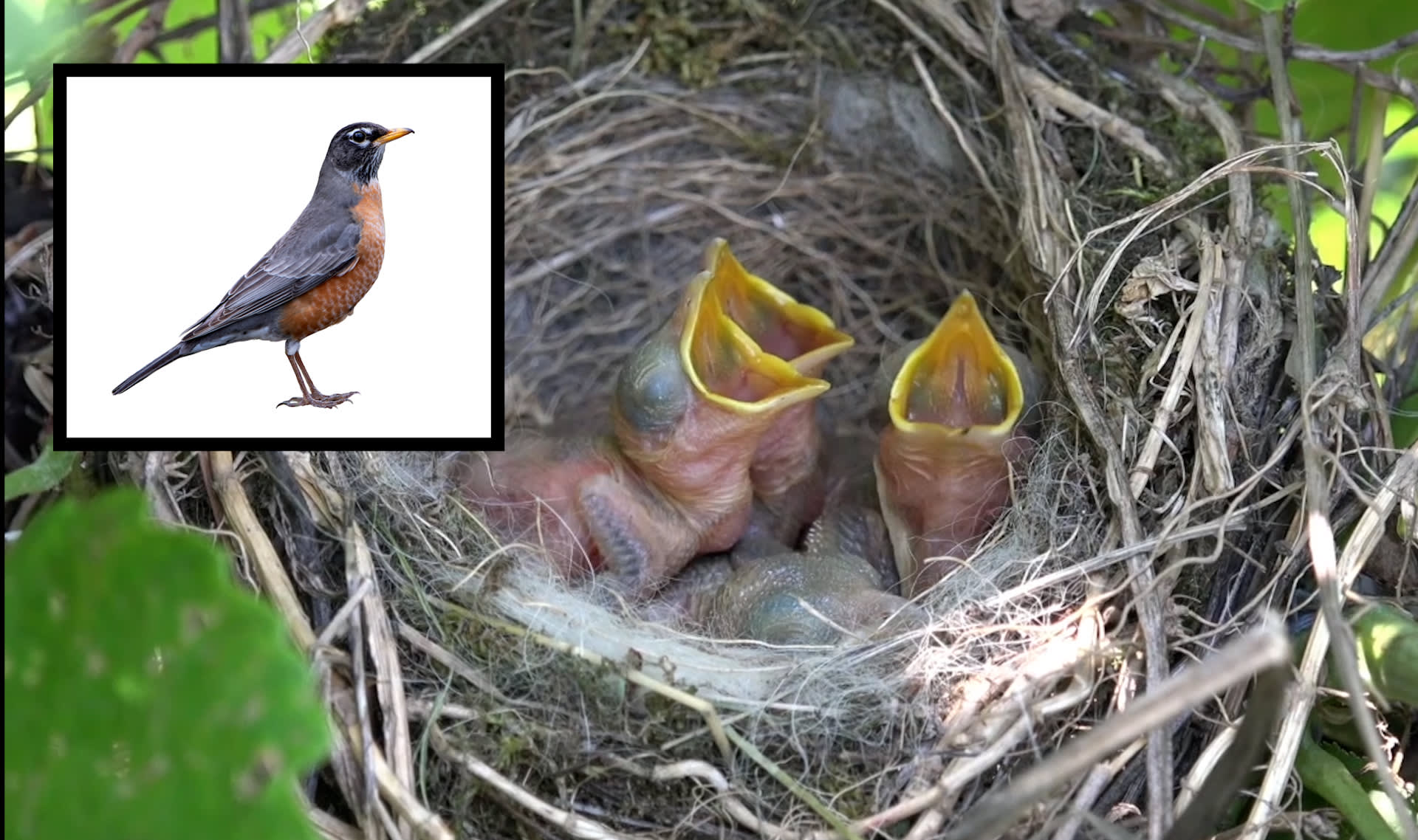

DISCUSS:
Every spring, birds build nests. Why does a bird need a nest?
Can you think of ways having a nest helps a bird?


01/15

02/15
nests. If you’re working alone, that’s okay too.

03/15
You don’t have twigs, but you do have a paper bag. Discuss:

04/15
hand in the bag. Have your partner use both hands to squash down
the sides of the bag.

05/15
Watch what would happen. Now watch what would happen if a bird
laid an egg in the nest you made from a bag. Discuss:

06/15
little bird to figure out what might make your nest better! Discuss:

07/15
Feel each one. Decide which would make the paper bag a softer place
for eggs and chicks.

08/15
Experiment with what you have! Make the inside of your nest soft
and cozy.

09/15
the bottom of your hand at the edge of the paper. Trace around your
hand with a pencil.

10/15
you made up. Add a tail.

11/15
just touch the line of the box. Now cut along the lines of the box. Your
bird is ready to sit on its nest!

12/15
anyone else’s nest. There are many different kinds of bird nests!

13/15

14/15
different stuff. Flamingoes use mud. Robins use twigs. Hummingbirds
use spider webs & bits of plants.

15/15
use to build your nest. Have fun, and stay curious.
Below are ideas for extending this topic beyond the activity & exploration you just completed.
- Readings: Online picture books about birds and springtime!
- Activity: Go Bird Watching
- Activity: Watch a bird feeder on a live cam.
Red Robin follows the life of a robin from egg to bird.
It's Spring! and Spring Senses remind children of all the wonderful things that happen in springtime.
If you can take your students outside, go for a walk where you look and listen for birds. In an urban schoolyard, you might see sparrows and pigeons and crows. In a park pond, you’re likely to see ducks and geese and coots. There are birds almost everywhere, even in the middle of a city!
If you can’t go for a walk, consider setting up a window bird feeder for your classroom. Maybe the birds will come to you!
To give your students a close-up look at birds, check out the bird feeder cam, live from Cornell Labs in Ithaca, New York. Ask students questions about what they see.
- How many different kinds of birds do they see?
- What are the birds doing?
- What sounds do they hear?
The birds you see will depend on the season of the year, so consider checking the feeder cam at different times of the year.

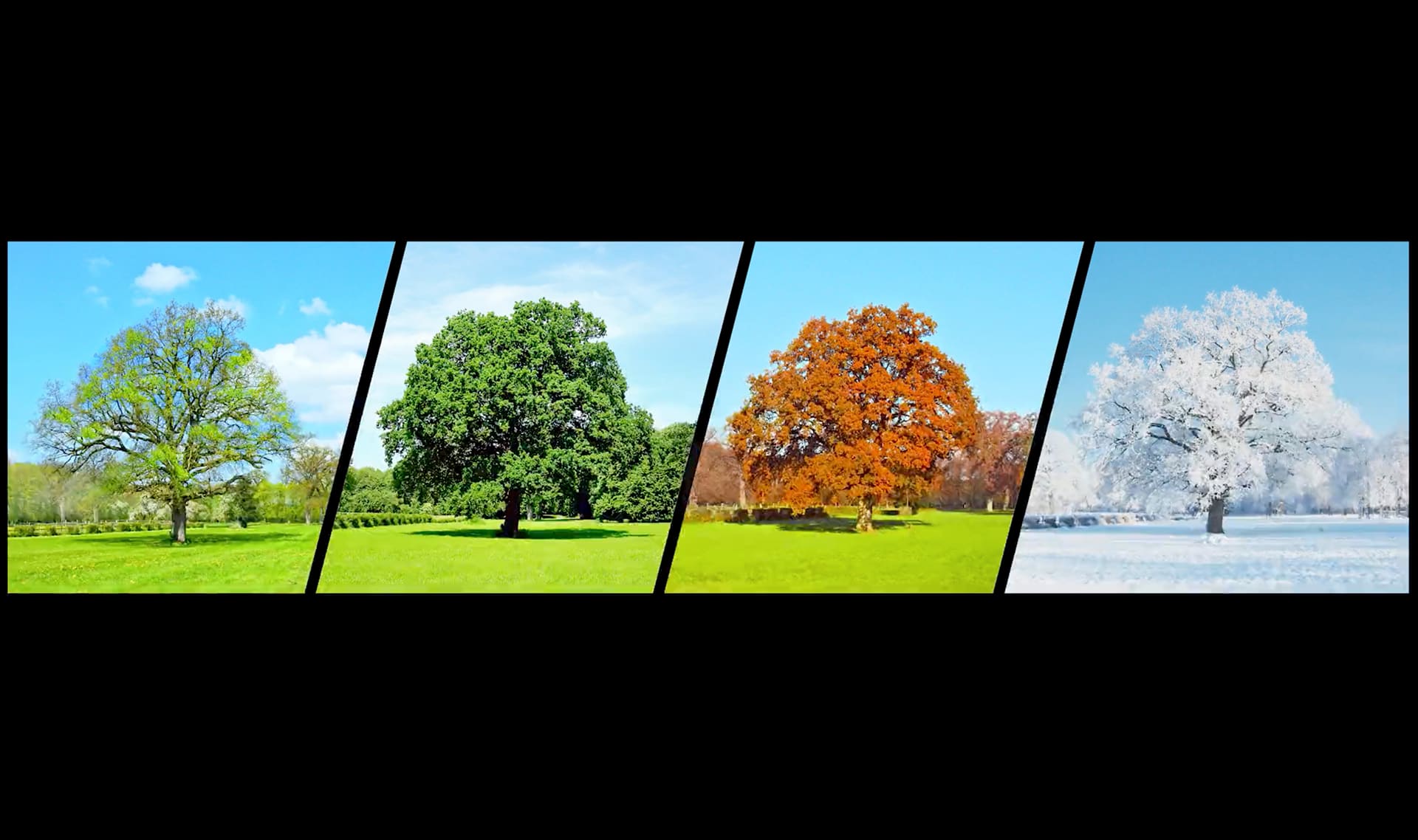
season
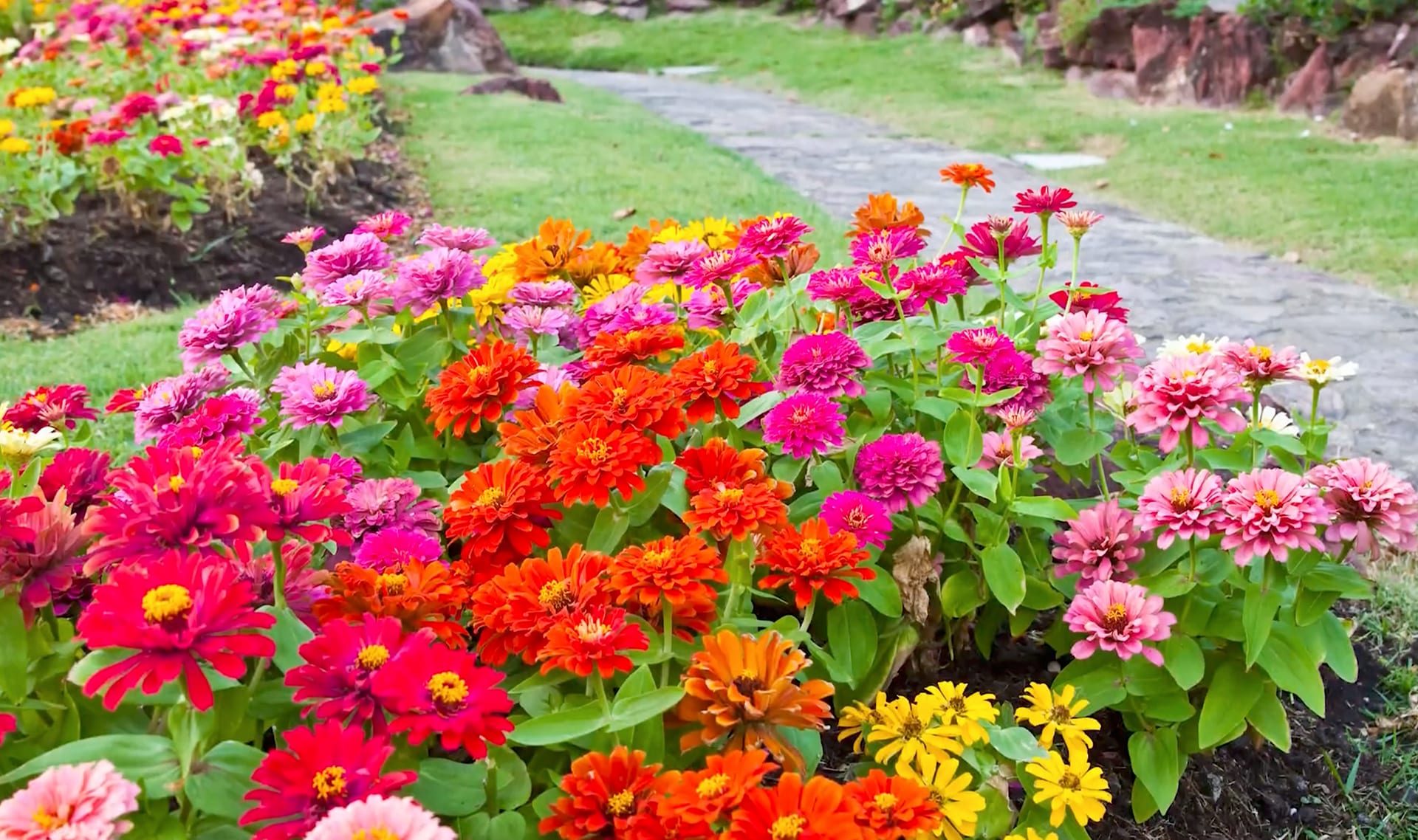
spring
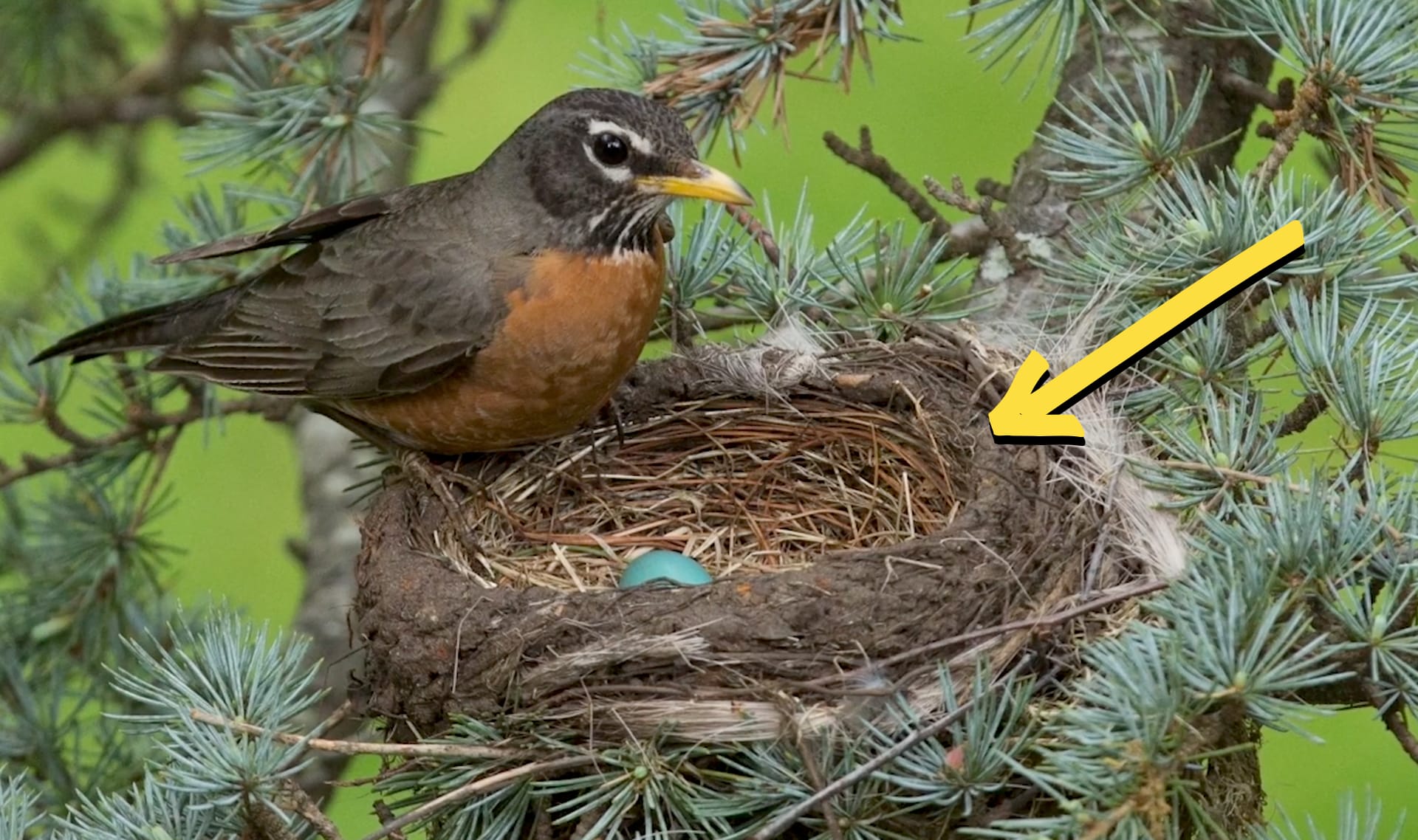
nest
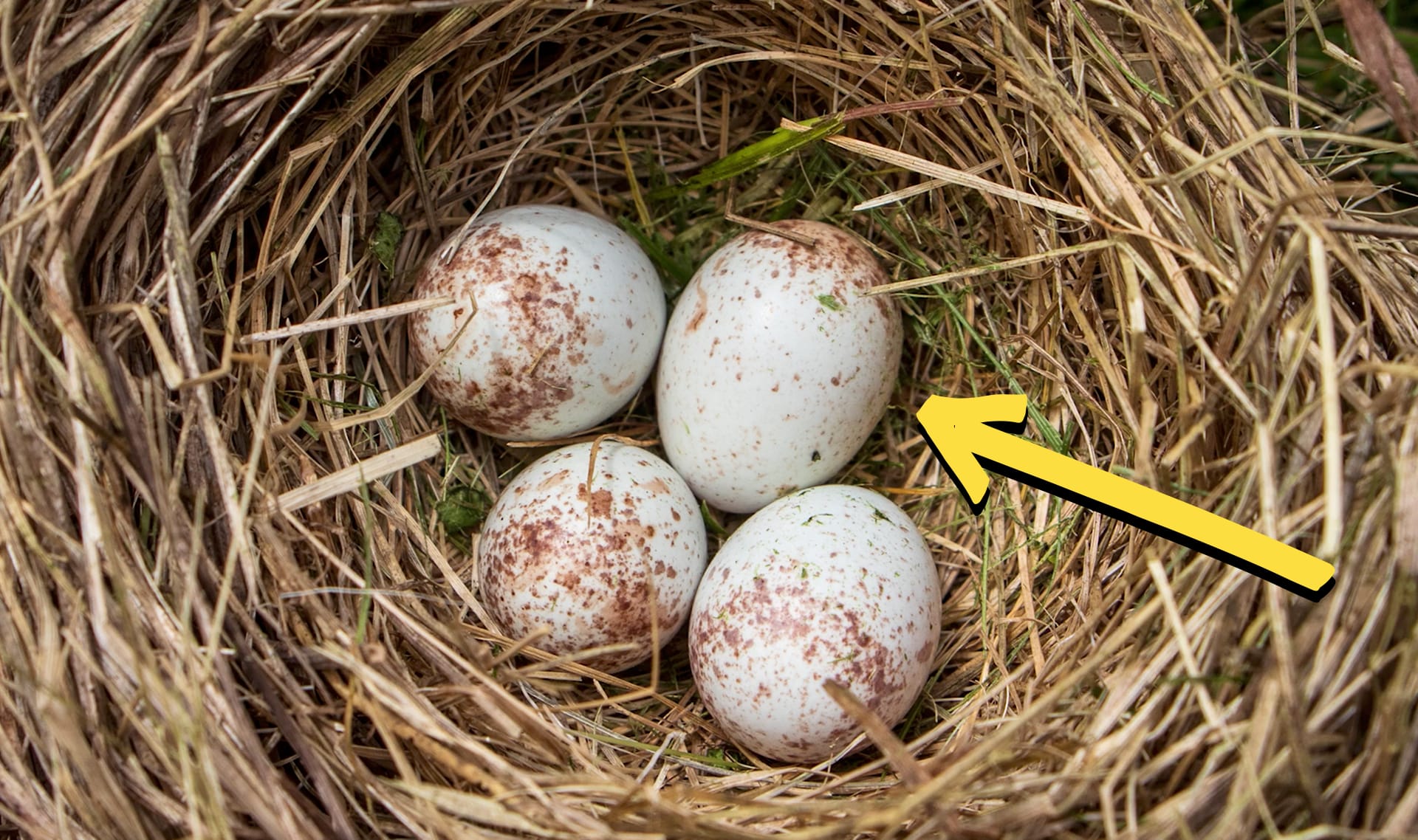
egg
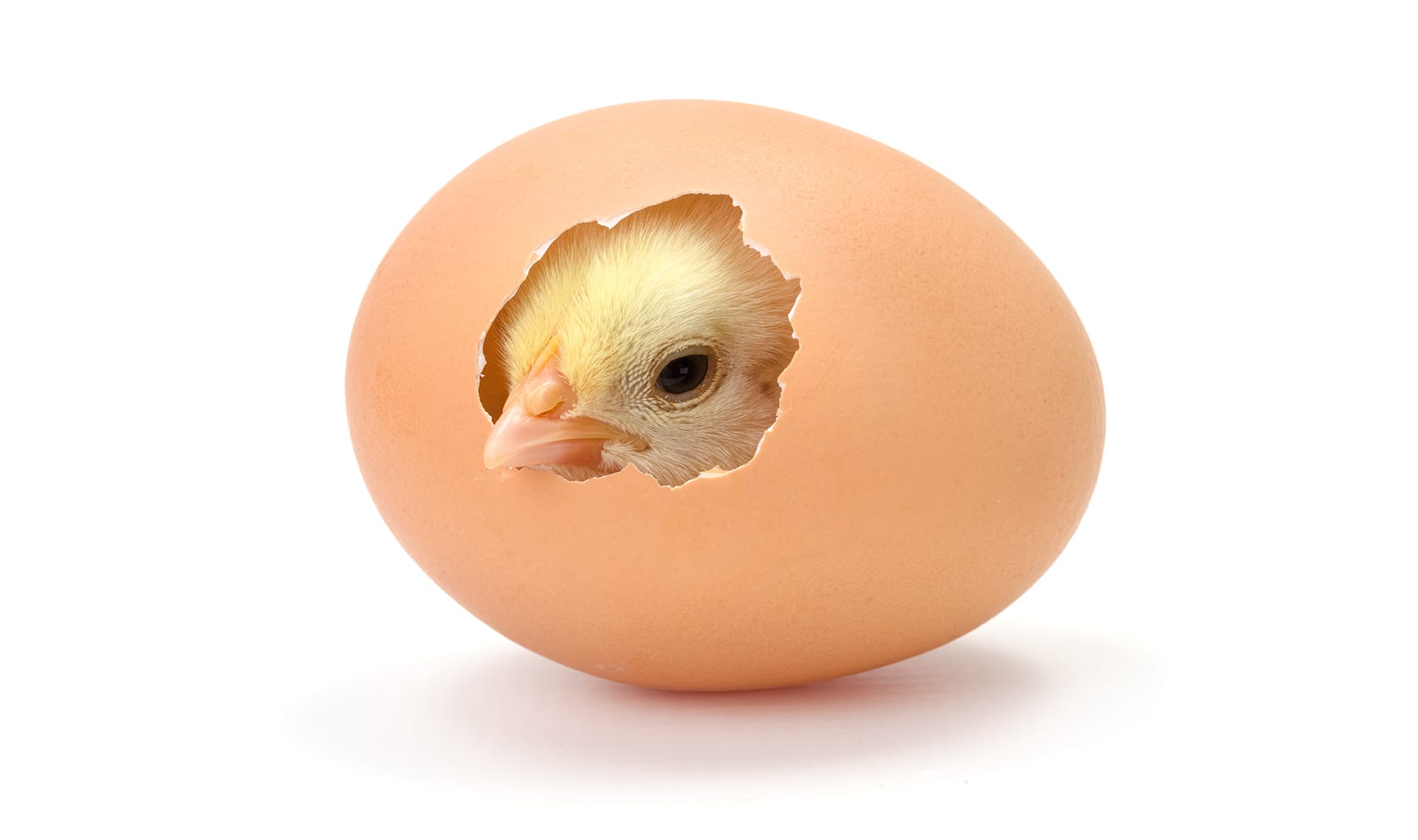
hatch

experiment
